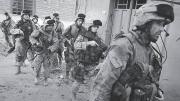We recognize four outstanding contributors to Harvard Magazine for their work on readers’ behalf in 2014, and happily confer on each a $1,000 honorarium.

Adam Kirsch
Contributing editor Adam Kirsch ’97—critic, essayist, poet—has long crafted beautifully written articles for the magazine. It is fitting to honor him again for “Extracting the Woodchuck” (January-February), a penetrating, fresh assessment of Robert Frost. We take genuine pleasure in awarding him the McCord Writing Prize, named for David T.W. McCord ’21, A.M. ’22, L.H.D. ’56, in recognition of his legendary prose and verse composed for these pages and for the Harvard College Fund.

Michael Zuckerman
The talented Michael Zuckerman ’10 (a writer, Lowell House resident tutor, and first-year Harvard Law student) took readers inside undergraduate life today in “The Lowell Speeches Project” (September-October), a model of warmth and clarity. He also reported in print in the same issue (“Citizen Scholars,”) and has written astutely online, on Teach for America and other topics. It is fitting to celebrate his contributions with the Smith-Weld Prize which honors thought-provoking writing about Harvard in memory of A. Calvert Smith ’14, a former secretary to the Governing Boards and executive assistant to President James Bryant Conant, and of Philip S. Weld ’36, a former president of the magazine.

Michael Kienitz
In a society divided by widening inequality—a fissure too easily overlooked from the comfortable confines of Harvard’s campus—sociologist Matthew Desmond has opened eyes by examining the effects of eviction on the nation’s poor. Photojournalist Michael Kienitz documented the phenomenon in the indelible images that appeared on the cover and accompanied “Disrupted Lives” (January-February), a feature on Desmond’s work by contributing editor Elizabeth Gudrais ’01. It was essential that the photographs treat their subjects with the dignity and respect that Desmond brings to his work; it was a privilege to publish this portfolio.

Taylor Callery
How to illustrate an idea? That was the challenge art director Jennifer Carling put to Taylor Callery as she reviewed “Disruptive Genius” (July-August), a profile of Clayton Christensen by deputy editor Craig Lambert ’69, Ph.D. ’78 (see also “And Having Written…”). Callery responded with a vivid cover, depicting the displacement of lumbering automobiles from Detroit by nimbler Japanese imports, and in the article itself, with imaginative renderings such as an animated herd of mini disk drives chucking a bigger, earlier model over a cliff: disruptive innovation personified.
We warmly thank all four.
~The Editors








